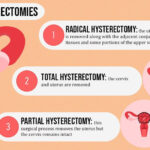Abdominal Surgery Deep Vein Thrombosis Prevention (DVT), a condition where blood clots form in deep veins, often in the legs. This article delves into effective strategies for preventing DVT following abdominal surgery. By understanding the causes, risk factors, and prevention methods, healthcare professionals can significantly reduce the likelihood of post-surgical complications, improving patient outcomes and reducing the need for extensive treatments.
Understanding Deep Vein Thrombosis (DVT)
Deep vein thrombosis is a serious condition where a blood clot forms in a deep vein, most commonly in the legs. In the context of abdominal surgery, DVT can develop due to prolonged immobility, changes in blood flow, or damage to blood vessels during the surgical procedure. If left untreated, these blood clots can travel to the lungs, causing a life-threatening condition known as pulmonary embolism.
Risk Factors for DVT After Abdominal Surgery
Several factors can increase the likelihood of DVT after abdominal surgery. These include:
- Immobility: Extended periods of immobility during recovery significantly contribute to blood stagnation, which promotes clot formation.
- Obesity: Excess weight puts more pressure on veins, reducing blood flow and increasing clotting risks.
- Previous DVT History: Patients with a history of DVT are more likely to experience clots following surgery.
- Age: Older patients tend to have less mobile lifestyles and may suffer from other conditions, such as diabetes, which exacerbate DVT risk.
- Cancer: Certain cancers increase the risk of clotting, especially those related to abdominal organs.
- Prolonged Surgical Procedures: Longer surgeries increase the risk of blood clot formation due to extended immobility and vascular injury.
The Role of Prophylactic Measures in Abdominal Surgery Deep Vein Thrombosis Prevention
Preventing DVT after abdominal surgery requires a multi-faceted approach involving pharmacologic treatments, physical activity, and mechanical interventions. Let’s explore the most effective methods.
Pharmacologic Prevention
Pharmacologic interventions are commonly employed to prevent DVT following abdominal surgery. These medications help reduce the blood’s ability to clot, thus preventing the formation of clots.
1. Anticoagulants
Anticoagulants, such as low molecular weight heparin (LMWH), unfractionated heparin, or direct oral anticoagulants (DOACs), are among the most common pharmacologic treatments. They work by inhibiting the clotting factors in the blood, thereby reducing clot formation. Administering LMWH shortly before surgery and continuing during the postoperative period is a well-established practice.
2. Aspirin
Aspirin, while not as potent as other anticoagulants, is sometimes used in low-risk patients for its ability to inhibit platelet aggregation, thereby reducing the likelihood of clot formation.
Mechanical Prevention Strategies
Mechanical interventions are essential in promoting blood circulation and preventing clot formation after abdominal surgery. These methods are often used in conjunction with pharmacological treatments.
1. Compression Devices
Intermittent pneumatic compression (IPC) devices are a standard tool for preventing DVT. These devices inflate and deflate around the legs to encourage venous return and improve blood flow. This rhythmic compression mimics the effect of walking, which is important when patients are immobile after surgery.
2. Stockings
Elastic compression stockings (also known as graduated compression stockings) are often recommended to promote circulation in the lower extremities. They apply pressure at the ankle, gradually decreasing up the leg, which helps propel blood back toward the heart, preventing clotting.
Early Mobilization and Physical Activity
One of the most effective measures to prevent DVT is ensuring that the patient begins moving as soon as possible post-surgery. Early mobilization helps stimulate blood circulation, decreasing the risk of clot formation.
1. Post-Surgical Exercises
Simple post-surgical exercises such as ankle pumps, leg lifts, and light walking can significantly improve circulation. The patient should begin these exercises under the guidance of a healthcare provider, typically within a few hours after surgery if feasible.
2. Physical Therapy
In some cases, a physical therapist may work with the patient to design a specific rehabilitation program, focusing on gradually increasing mobility without putting too much strain on the healing surgical site.
Hydration and Nutrition
Hydration and proper nutrition play a critical role in maintaining healthy circulation and preventing DVT after surgery. Dehydration can thicken the blood, increasing the likelihood of clot formation, so it is essential to ensure that the patient remains adequately hydrated.
- Fluid Intake: Maintaining optimal fluid balance helps prevent blood from becoming too thick, promoting normal circulation.
- Nutrition: A well-balanced diet, rich in vitamins and minerals such as Vitamin E and Omega-3 fatty acids, can also reduce clotting tendencies by improving vascular health and reducing inflammation.
Monitoring and Regular Check-ups
Patients who have undergone abdominal surgery should be closely monitored for signs of DVT, especially within the first few days following the procedure. Regular assessments include checking for swelling, pain, or redness in the lower extremities, which are common signs of a developing clot.
Use of Inferior Vena Cava (IVC) Filters
In high-risk patients who are unable to tolerate anticoagulant therapy, an IVC filter may be considered. These filters are inserted into the inferior vena cava (the large vein that returns blood to the heart), where they trap any blood clots that may travel toward the lungs.
Long-Term Strategies for Preventing DVT
Prevention of DVT doesn’t stop after discharge from the hospital. Patients who have undergone abdominal surgery need to continue monitoring and managing their risk factors.
1. Follow-up Care
After discharge, regular follow-up visits with the surgeon or healthcare provider are essential for tracking recovery and assessing any long-term risks of clotting.
2. Lifestyle Modifications
Patients are encouraged to adopt a healthy lifestyle post-surgery. Maintaining a healthy weight, quitting smoking, and exercising regularly can significantly reduce the risk of DVT. Staying active helps prevent blood from pooling in the veins and minimizes clot formation.
Prevention of DVT after abdominal surgery is critical for reducing complications and improving patient recovery. A comprehensive strategy that combines pharmacologic treatments, mechanical interventions, early mobilization, and lifestyle adjustments can significantly lower the risk of clot formation. Early detection and continuous monitoring also ensure that healthcare providers can respond promptly if DVT develops. By adhering to these strategies, patients can enjoy a faster, safer recovery with minimal risk of life-threatening complications like pulmonary embolism.

